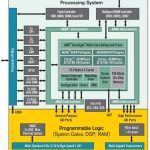Designing an LTE modem is an interesting case study in architectural and system level design because it is pretty much on the limit of what is possible in a current process node such as 28nm. I talked to Johannes Stahl of Synopsys about how you would accomplish this with the Synopsys suite of system level tools. He is the first to admit… Read More
Tag: arm
Intel Quark: Synthesizable Core?
At IDF Brian Krzanich gave the keynote. I won’t summarize the whole thing here but just talk about one part that was something they had actually managed to keep secret ahead of time: Quark.
Quark is a synthesizable core. It uses 1/10th power of Atom and is 1/5 size. Now I am writing this, I don’t know if this is a fair comparison… Read More
Ecosystem: ARM versus Intel
Ecosystem is everything when it comes to modern semiconductor design, especially if it is mobile. The fabless semiconductor industry has been all about ecosystem since the beginning and that is why we hold supercomputers in our hands today, believe it. After the invention of the transistor in 1947, and the invention of the integrated… Read More
Imagination Has More Stuff Than You…Imagine
Imagination seems to be well known for a couple of things. Firstly, everyone knows that it is the graphics processor used in the iPhone and the iPad and lots of other phones. And they know that Imagination acquired MIPS at the start of this year.
But what people don’t seem to really appreciate is just what a huge portfolio of IP… Read More
20nm IC production needs more than a ready Foundry
I think by now all of us know, or have heard about 20nm process node, its PPA (Power, Performance, Area) advantages and challenges (complexity of high design size and density, heterogeneity, variability, stress, lithography complexities, LDEs and so on). I’m not going to get into the details of these challenges, but will ponder… Read More
Xilinx picks another winner…
Just as important as block RAMs, IO and DSP48’s is what interconnect or fabric is going to be used when considering SoC FPGA designs. I think Xilinx has found the winning combination. What is paramount to the new SoC FPGA methodologies is not only the challenge of moving huge amounts of data around; we are now to consider data… Read More
CEVA and ARM Do LTE
If you have purchased a high-end cell-phone or tablet in the last couple of years it probably has LTE, although some carriers try and blur things by showing a symbol like 4G when you are in an area that has LTE despite the fact that your phone does not support it. Don’t you love cell-phone marketing? Talking of which, if a camel … Read More
Intel’s Q2 Conference Call
Yesterday was Intel’s Q2 conference call. I think that there are some interesting little pieces of information. The financials were what analysts expected although they did take down their guidance for the rest of the year. But that is never the interesting point of Intel conference calls (they almost always hit guidance).… Read More
Minimize the Cost of Testing ARM® Processor-based Designs and Other Multicore SoCs
On my first job out of college as an IC design engineer I was surprised to discover that a major cost of chips was in the amount of time spent on the tester before being shipped. That is still true today, so how would you keep your tester time down, test coverage high and with a minimum number of pins when using multiple processors on a single… Read More
Intel Benchmark Hoax!
To be fair, cheating on CPU benchmarks is not new, so if you haven’t followed the computer industry for the past 30 years you might be surprised by Intel cheating, but I’m certainly not. Back in the day I worked for Data General and we “creatively” benchmarked against the Digital Equipment VAX all day long. There are different types… Read More











